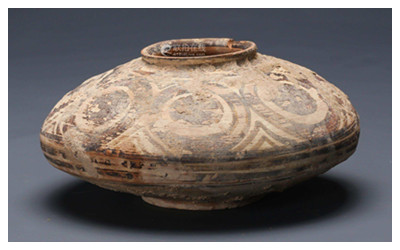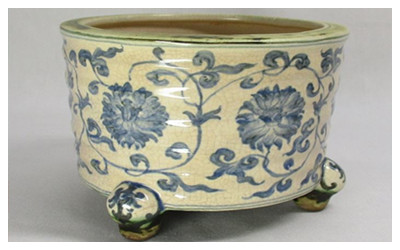Skype: neodalle-travel
Tel: +86 135 7447 2266
E-mail: sales@visitaroundchina.com

 The invention of pottery is an important process for human civilization. In accordance with his will, human created a brand new thing with natural materials for the first time. Pottery from the late Paleolithic discovered in Yangyuan County, Hebei Province shows that Chinese pottery production has a history of more than 1700 years. Pottery is an important treasure of Chinese culture.
The invention of pottery is an important process for human civilization. In accordance with his will, human created a brand new thing with natural materials for the first time. Pottery from the late Paleolithic discovered in Yangyuan County, Hebei Province shows that Chinese pottery production has a history of more than 1700 years. Pottery is an important treasure of Chinese culture. In 1921, Johan Gunnar Andersson, a Swedish geologist and archaeologist, discovered a Neolithic Age site in Yaoshao Village, Mianchi Town, Henan Province. Later sites of similar cultural characteristics found in Hebei Province, Shannxi Province, Gansu Province, Qinghai Province, Hetao region. This cultural type is named Yangshao Culture, with a history of 5000 to 7000 years. Ancient painted potteries have been unearthed from all Yangshao Culture sites, so it is also called Painted Pottery Culture.
In 1921, Johan Gunnar Andersson, a Swedish geologist and archaeologist, discovered a Neolithic Age site in Yaoshao Village, Mianchi Town, Henan Province. Later sites of similar cultural characteristics found in Hebei Province, Shannxi Province, Gansu Province, Qinghai Province, Hetao region. This cultural type is named Yangshao Culture, with a history of 5000 to 7000 years. Ancient painted potteries have been unearthed from all Yangshao Culture sites, so it is also called Painted Pottery Culture.
The first ancient Chinese painted pottery was discovered in the Xian’s Banpo Site, dating back between 4800BC and 4300BC of matriarchal society period. The patterns are of various kinds, such as the animal patters (fish, frog, deer and birds), geometric motifs (abstract animal patterns, plant patterns, triangle lines, diagonal lines, etc.), and woven patterns. The painted pottery of Yangshao Culture is not only stylish in design, but also practical in daily life.
Ancient Chinese painted potteries unearthed from Majiayao Culture sites are mainly basin, pot, jar, kettle and other vessels dating back to 3300BC to 2900BC, with human figure motifs, animal patterns, wavy lines, swirl lines, etc. The ancient painted pottery was mainly used as the funeral wares to be buried with the dead, the royals and nobles. So there are also painted potteries excavated from Dawenkou Culture sties, Daxi Culture sites, Qujialing Culture sites and Qijia Culture sites.
Black Pottery
In the final stage of the firing of artifacts, slowly add water to make charcoal off from the top of the kiln, produce smoke and deliberately let the smoke blackened the pottery, thus forming the black pottery. It is also a peak for Chinese Neolithic pottery industry after the emergence of painted pottery. In 1928, the first black pottery found in Zhangqiu County Longshan Town. As for its cultural heritage, archeology called "Longshan culture". According to the results of radiocarbon dating, these vessels ca be dated back to 2500 BC — 2000 BC.
This typical Longshan culture, also known as Shandong Longshan Culture, following Dawenkou culture developed a late Neolithic culture. Its distribution area is in Shandong and northern Jiangsu area. Pottery as an important feature of Shandong Longshan culture, it is another brilliant creation of Chinese painted pottery comparable with Neolithic pottery process.
White Pottery
White pottery is fired with kaolin and the texture is white and delicate. It originated in the Neolithic period, due to the improved production technology in Shang Dynasty, the raw materials to make washing is more sophisticated while grasping the degree of fire burning is just right, thus making even more sober lovely burnt artifacts. White pottery shapes mainly are pots, wine container, Gui and so on. White pottery was living utensils used by slave-owning aristocracy. Up to Zhou Dynasty, it gradually disappeared.
Stamped Pottery
The stamped pottery is firing up after specified parts are stamped. According to its firing temperature, stamped pottery can be divided into stamped polymer clay and stamped hard pottery. The former one can be further divided into argillaceous polymer clay and fine sand polymer clay whose color are bronzing, hoary and grey. Stamped polymer clay was popular from late Neolithic period to Shang Dynasty. As the firing temperature is high, stamped hard pottery is much harder than stamped polymer pottery and it is developed on the basis of stamped polymer pottery.
 Ask Questions ?
Ask Questions ?